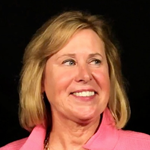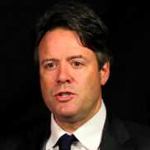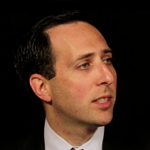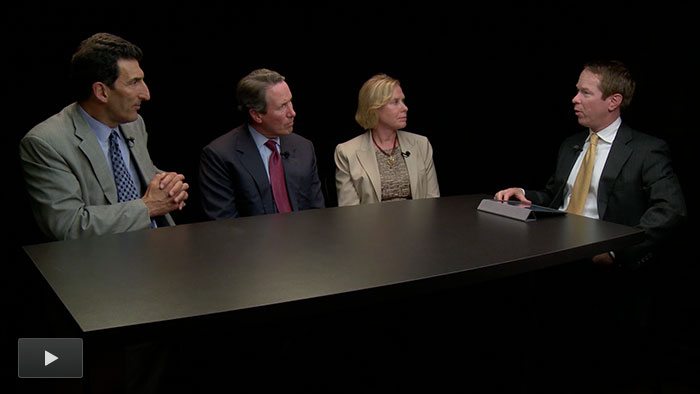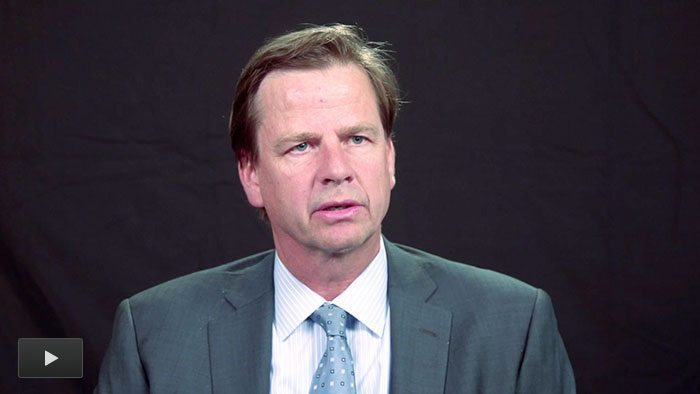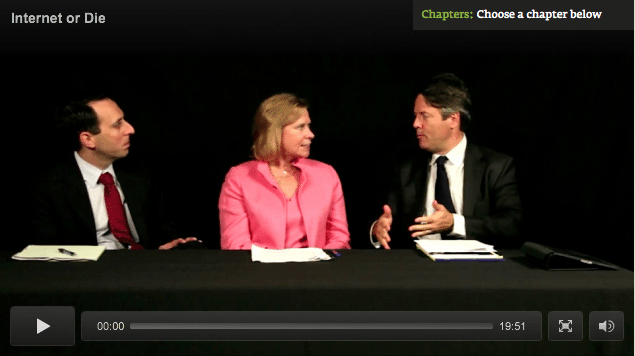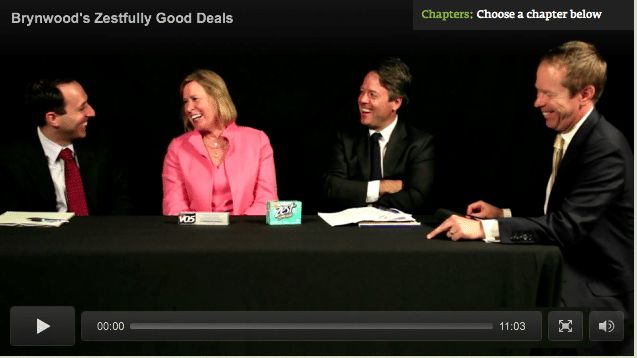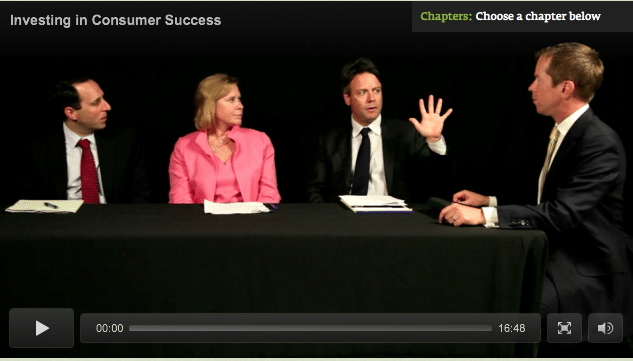How Fenway Saw Success with 1-800-CONTACTS
How do you make money in a consumer business viewed as commoditized? You win on service—a strategy Fenway Partners’ Timothy Mayhew pursued when investing in direct-to-consumer business 1-800-Contacts. The deal was a huge exit success for Fenway and the company wins rave reviews from customers. Fenway outsourced manufacturing, enhanced the website and mobile app, and brought high-touch service.
In the second in a four-part Privcap series on private equity success in the consumer sector, Mayhew discusses the deal with Michael J. Grossman of RSM and Joan McCabe of Brynwood Partners.
Transcript Download Transcript
How Fenway Saw Success With 1-800 CONTACTS
David Snow, Privcap: We’re joined today by Michael Grossman of RSM, Joan McCabe of Brynwood Partners, and Tim Mayhew of Fenway Partners. Welcome all to Privcap today. Thank you for joining us. We’re all talking about the consumer opportunity in private equity. All of you have a lot of experience in the consumer sector, investing and also helping clients be successful investing in the consumer sector.
I’m interested in hearing some stories. Tim, you have a very interesting experience with 1-800-CONTACTS. And it’s a good story, and so I hope you can share the highlights.
Timothy Mayhew, Fenway Partners: It’s the one I love talking about. It’s fun. We just sold it to WellPoint. We made about four times our money in it. It’s a business we took private. It was a publicly-traded business that we bought in 2007.
We partnered with the founder, a fellow by the name of Jonathan Coon, who started the business in his dorm room at BYU. It is the largest seller of contact lenses in the country, direct-to-consumer. It has a telephone number, 1-800- CONTACTS, and has a website, 1-800-CONTACTS. And we took it private, and we had a very clear sense of what we wanted to do with it.
During our ownership, we doubled the EBDA. And we actually grew head count almost 15%. So it was not a cost cutting play. It was actually an investment and growth play. So what did we actually do?
The first thing we did is we simplified the business. We sold a contact lens manufacturing business that the company actually had. And we just focused on the direct-to-consumer value that the business has. The second thing we did is focus on customer service. And it just so happens that this company sells contact lenses, what it really sells is customer service.
AndI think you guys might actually be customers or know people who are customers, generally, I do. Everybody who has had an experience with 1-800-CONTACTS has had a positive experience. It’s one of the most fun companies I’ve ever been associated with because everybody would come up and gush about what the experience was. And so we wanted more of that.
And for us, instead of answering the phone more slowly, we answered it even faster. So we added more people in that area. Or, instead of actually letting the world-class website sort of sit there and simmer, we actually invested more in the website. And we’ll talk about that a little bit. So it was a focus on customer service.
The third thing we did is we partnered with Walmart. And I know, Joan, you have a lot of experience with Walmart. I know you guys have an office down in Bentonville. We have, traditionally, sold a lot of our products through Walmart. Walmart sells about a third of everything in the country at this point. So, at any given point, we may have
$700 or $800 million worth of sales that are going through Walmart.
But this is the first time that we actually partnered with them. And what we did is we merged their contact lens business with ours. They invested in the business, they came on the board. And we created a seamless, multi- channel, customer experience. So it didn’t really matter where you came into our system, you were known equally well, and you were treated with this fabulous customer service.
And so that was a huge deal for us that was actually an expansion of a distribution. So here was something, heretofore, had been on the phone and on the web, and now we were actually in bricks and mortar in the second- largest optical chain in the country. So that was a big deal.
Snow: That’s usually the reverse direction of many companies. They start in bricks and mortar, and then they get their act together—
Joan McCabe, Brynwood Partners: I was going to say that that is really, really cool because I think that’s the wave of the future. The bricks and mortar guys, Walmart, people like that, are going to follow what’s on the internet. And, to your point, he built the brand through the internet and the phone, and they said, hey listen, who else can I– And nobody better to align with that than 1-800 CONTACTS.
Mayhew: Absolutely. And Walmart viewed 1-800-CONTACTS as the subject matter expert in the space. And they loved the brand. One of the things that Walmart likes to do is to sell brands. They just want some for a little less, that’s all. So, we had–
McCabe: Well, you can have good, better, and best ISL.
Mayhew: So we worked on all of that. The fourth thing we did is we went mobile. There are so many internet businesses that have remained static. But I’m sure all of you have children or have nieces and nephews, and if you do, you recognize that the way they spend all their time is on their portable device.
And we, two years ago, did 0% of our sales through a portable device. At this point, we’re doing 20% of our sales through a portable device. And that requires a completely different investment. You can’t just take a website and put it on a portable device. It just doesn’t work. So we created a whole new team and invested in that. And then the fifth thing we did– Well,
Grossman: Before you get to the fifth thing– I’m curious, Tim, did you create that mobile device or did you acquire certain add-on type companies with that technology?
Mayhew: We recruited people in that had experience developing apps just for mobile devices. So it was talent that we brought in that had demonstrated success in that space. And people really love coming to 1-800-CONTACTS, it’s a well-known company. It’s in Salt Lake City.
We really had very little leverage on the business. We had a lot of cash. We were clearly investing in the future. People were excited about the Walmart alliance. So it was easy to track that kind of talent.
Andthe reason why I say that is is actually attracting talent in an internet business is probably the biggest key. It’s not a capital issue. It’s not knowing where you want to go. It’s getting the right people in place. So that’s a good question.
The last thing we did is we moved into glasses. Contact lenses in the United States is about a $3.5 billion market. Glasses is about a $25, $26 billion market. Michael, during our introduction conversation, had mentioned that his father was a optician, and so he understands this space a little bit. He’s probably not going to be happy I say this, but we decided who better, if you buy your contact lenses online right now, and you’ve had a wonderful customer experience, who would you better trust to explore maybe buying glasses online than 1-800-CONTACTS.
And so we had the URL, called glasses.com, and we built that out. We’ve gotten all kinds of different kinds of brands. And, again, because we’re always trying to do something a little special, a little different, we have worked on the customer experience online buying glasses, which tends to be terrible.
And we have invested millions of dollars developing a virtual try-on technology, which is rolling out as we speak right now. And will completely change how you might actually even think about how you would enter a store and try on classes because it allows you to have– If you’re an eyeglass wearer, you probably have vision correction. And if you walk in, you take off your glasses, and you put on another frame, you can’t actually see how you look.
So imagine if you had a screen there that allowed you to see yourself with 30 different glasses on. And then interact with social media, so that if you have a loved one or somebody whose style you care about, they could opine on it right there and then and help you make that decision. Imagine all of that, that’s kind of where we’re going with it.
So those were the five things we did with it, and, as a consequence, revenue grew dramatically. The EBDA grew dramatically, and we had a strategic buyer. And for us, that’s actually the biggest sign of success. If we are selling to a strategic buyer, we have done our job well because we have built a business that somebody who is in the industry knows is extremely high quality. So that’s a little bit about that.
Grossman: Well, from a due diligence perspective, you know, our clients are very interested in gross margins. And in the middle market, especially, your gross margin levels may not be accurately reported– and so, this classifications and other type of items that are really kind of making a lot of noise. So I’m curious, though, that when you guys went into the glasses and the mobile technology, what did that do to your gross margin levels?
Mayhew: Well first off, it’s a great question because we believe in gross margin. That may be the single largest area that we diligence. You can always, and I know Joan does this quite well, take a business and maybe grow revenue dramatically in ways it hadn’t in the past, OK? You can always fiddle with the corporate overhead that you lay on that.
But, in industry has a gross margin structure, and you are unlikely to change that gross margin structure, at least during a five to seven year period. It is probably the most important thing from our standpoint. And having sustainable gross margins is the key. And, in this particular instance, glasses is actually a much higher gross margin business than contact lenses.
So we were actually blending up our gross margin quite nicely. And, in terms of the mobile piece, it really didn’t change. We don’t have different pricing for the phone, the web, or a mobile app. The pricing was not massively different, let’s put it that way. So the pricing didn’t really change from our standpoint. So net, net, net, it was all accretive, which was important to us as you can imagine.
McCabe: I know but that’s really interesting. Who would have thought glasses were a high gross market?
Snow: Your customers are going to spend so much time with their mobile apps that their eyesight is going to further degrade. And, of course, that makes them perfect customers for you.
What is a major deal-flow trend you are seeing in the consumer sector?
Grossman: We see a little bit more minority interest deals. I guess this kind of started back in ’09 when there weren’t really a lot of deals going on that you had some consumer focus, private equity groups looking at minority interest deals. You had companies that didn’t necessarily want to sell 100% or 80% of their business, but yet they needed some working capital, growth equity. And so they were able to get those deals done.
What services does RSM offer to private equity firms?
Grossman: Well, in private equity, we’ve got a lot of experience. And so, not only me personally, I’m on the transaction advisory. So we do buy-side due diligence and sell-side due diligence. But we also do tax structuring, M&A tax advice. Technology is a big piece of our business, and so we have a whole consulting practice built around technology and other areas of performance improvement. And, of course, there’s also the portfolio audits, as well as the audits of the fund.
In performing due diligence on a consumer-facing business, what numbers are of particular importance?
Grossman: Margins are very important to our private equity clients. And it’s amazing, in the middle market, you really need to understand what you’re doing, what you’re looking at, to make sure that those margins are appropriate.
Do you mostly perform buy-side due diligence?
Grossman: We see a little bit more in the sell-side. We primarily did buy-side due diligence. We still do, but we are trending towards sell-side. We used to probably do 80% buy-side, 20% sell-side, and now it’s more like 60/40.
